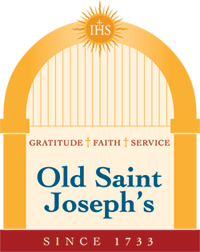for September 14
Feast of the Exaltation of the Cross
Today’s feast, the Exaltation of the Holy Cross, celebrates a central paradox of Christianity. St. Paul summed it up in his first letter to the Corinthians: the cross, specifically the death of Jesus on the cross, is “a stumbling-block to Jews and foolishness [or an absurdity, in another translation] to Gentiles.” The Church exalts the cross because it is the instrument of our salvation, but it became the instrument of our salvation through its use as an instrument of torturous, shameful execution. It’s understandable that non-Christians would think this does not compute. The readings give clues to making sense of the paradox, but a true understanding can only occur in our hearts.
In the Gospel passage, Jesus is initiating Nicodemus into the mystery of the salvation he brings. Nicodemus is a Pharisee, a scholar of Jewish law, who believes that Jesus has come from God, but like so many others, he has been most persuaded by Jesus’s miracles. They are the signs that God is present with Jesus, and he comes to Jesus for instruction from a holy man. As a teacher himself, he expects to be taught by a superior teacher. Instead Jesus talks to him of rebirth in the Spirit. Salvation is made possible by God’s love toward the world and his willingness to sacrifice his only Son for the world. Rebirth in the Spirit is a response to that love by loving God and others in the same way. Jesus himself becomes a model of this love by responding to the Father’s loving sacrifice by sacrificing himself for us. The power that attracts Nicodemus is not in fact the power to control but the power to give up control for love.
Jesus is not the first one to bring this message to God’s people. It is the message of all the prophets. The difference with Jesus is that the prophets were intermediaries between God and the people whereas as Jesus is God. He brings the Spirit into humanity so that we can all move toward loving like God. Jesus himself refers to the connection between the Jewish relationship with a saving God and the relationship we have through Jesus. In speaking about his coming crucifixion, his being lifted up on the cross, he alludes to Moses’s lifting up of the serpent. This is the story told in the first reading from the Book of Numbers. During the exodus from Egypt, the people repeatedly became angry at the hardships along the way and forgot their gratitude toward God for bringing them out of slavery. On this occasion, God punished them with poisonous snakes, which brought them to their senses and caused them to repent. God then saved those who had been bitten by having Moses create a bronze figure of a serpent and hoist it on a pole; those who looked at the serpent did not die.
There’s an obvious similarity between the serpent on a pole and the man Jesus on the cross, but perhaps a deeper similarity is that the healing serpent is an image of the destructive serpent just as the saving Christ is a human being like the human Adam who brought sin into the world. What is different is that Jesus is not just an image of a man but is fully human. Instead of exercising his power through intermediaries, Jesus, who is himself God, gives up his power. The understanding of Jesus as the new Adam also comes from Paul. In the beautiful words of the hymn in the Letter to the Philippians, today’s second reading, “Rather, he emptied himself, taking the form of a slave, coming in human likeness; and found human in appearance, he humbled himself, becoming obedient unto death, even death on a cross.”
The cross challenges worldly power, material power, selfish power. It challenges the power of the strong to persecute the weak, of the privileged to oppress the poor, of the haughty to ignore the needs of ordinary people and the planet we live on. The cross challenges hatred and bigotry and systems that categorize people as more or less worthy. It stands for love, sacrifice, and enduring hope even in the face of death and destruction. And it reminds us of a God who came to live among us and never left. That’s why the cross is exalted.
—Christine Szczepanowski
The readings can be found on the US Conference of Catholic Bishops website.
Mass Times
Sunday at 7:30 AM, 9:30AM, 11:30 AM
Tues., Wed., & Thurs. at 12:05 PM
